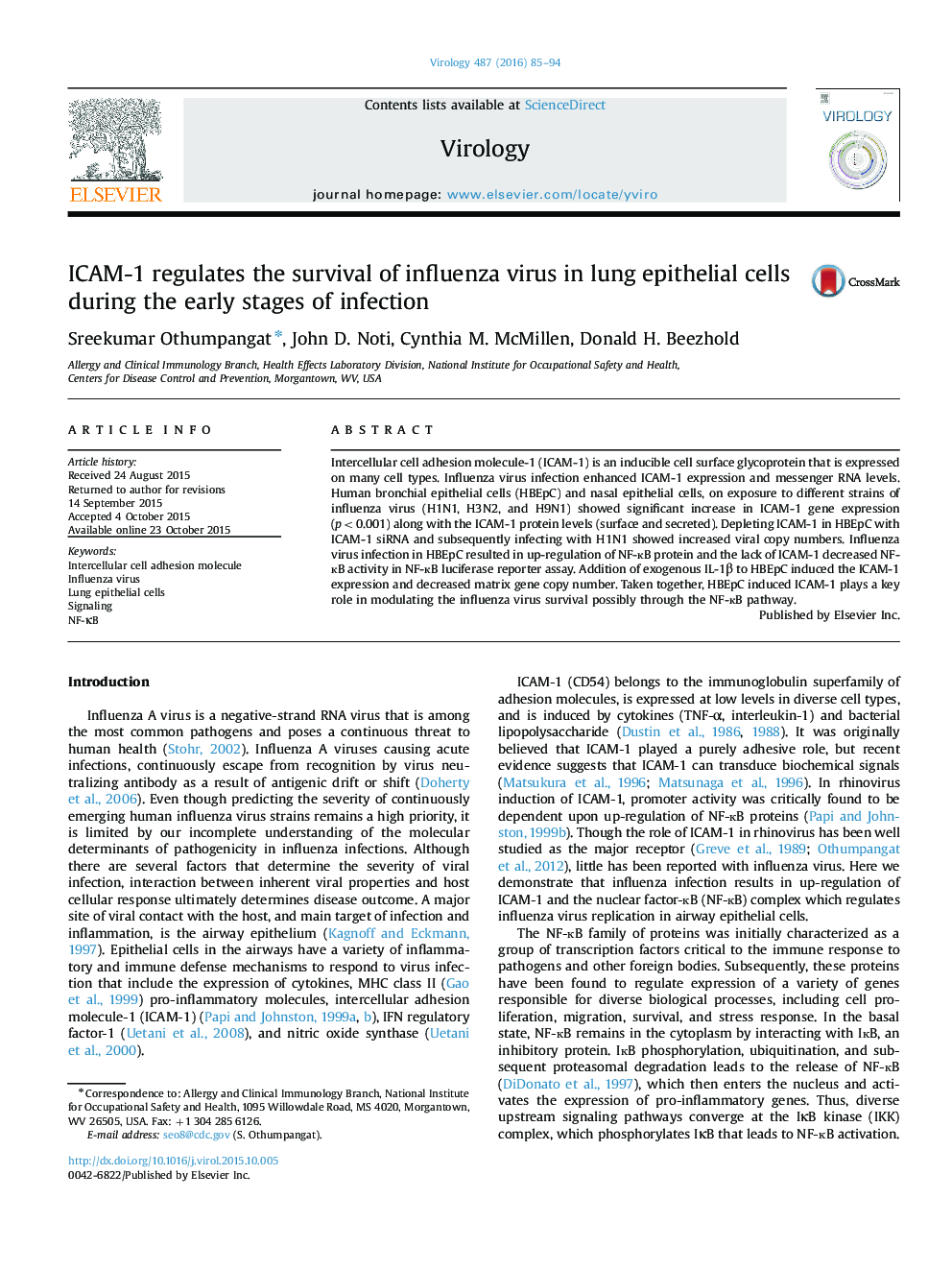| Article ID | Journal | Published Year | Pages | File Type |
|---|---|---|---|---|
| 6138813 | Virology | 2016 | 10 Pages |
â¢Influenza virus alters the ICAM-1 expression pattern in human lung epithelium.â¢In early stages of infection cellular ICAM-1 protects the cell from influenza.â¢Induction of ICAM-1 suppress viral replication.â¢ICAM-1 could be a good candidate for the early intervention strategy.
Intercellular cell adhesion molecule-1 (ICAM-1) is an inducible cell surface glycoprotein that is expressed on many cell types. Influenza virus infection enhanced ICAM-1 expression and messenger RNA levels. Human bronchial epithelial cells (HBEpC) and nasal epithelial cells, on exposure to different strains of influenza virus (H1N1, H3N2, and H9N1) showed significant increase in ICAM-1 gene expression (p<0.001) along with the ICAM-1 protein levels (surface and secreted). Depleting ICAM-1 in HBEpC with ICAM-1 siRNA and subsequently infecting with H1N1 showed increased viral copy numbers. Influenza virus infection in HBEpC resulted in up-regulation of NF-ĸB protein and the lack of ICAM-1 decreased NF-ĸB activity in NF-ĸB luciferase reporter assay. Addition of exogenous IL-1β to HBEpC induced the ICAM-1 expression and decreased matrix gene copy number. Taken together, HBEpC induced ICAM-1 plays a key role in modulating the influenza virus survival possibly through the NF-ĸB pathway.
